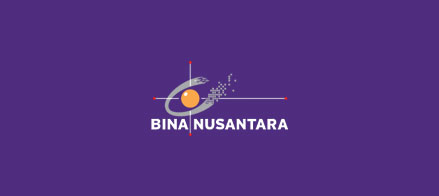Assignment 2
Review Questions
1. What hardware capability that first appeared in the IBM 704 computer strongly affected the evolution of programming languages? Explain why.
The floating-point hardware capability strongly affected the evolution of programming languages because before there is a floating-point hardware all floating-point operations had to be simulated in software, which is a very time-consuming process.
The floating-point hardware capability strongly affected the evolution of programming languages because before there is a floating-point hardware all floating-point operations had to be simulated in software, which is a very time-consuming process.
2. In what year was the Fortran design project begun?
In 1954 the Fortran design project is begin.
In 1954 the Fortran design project is begin.
3. What was the primary application area of computers at the time Fortran was designed?
The primary application area of computer at that time is mathematic application area.
The primary application area of computer at that time is mathematic application area.
4. What was the sorce of all of the control flow statements of Fortran I?
All of Fortran I control statements were based on 704 instructions.
All of Fortran I control statements were based on 704 instructions.
5. What was the most significant feature added to Fortran I to get Fortran II?
The most significant feature added to Fortran I to get Fortran II is the independent compilation capability.
The most significant feature added to Fortran I to get Fortran II is the independent compilation capability.
Problem Sets
1. Make an educated guess as to the most common syntax error in LISP programs
The most common syntax error in LISP is the Incorrect placement or number of parentheses because in LISP, program code and data have exactly the same form which is parenthesized lists.
The most common syntax error in LISP is the Incorrect placement or number of parentheses because in LISP, program code and data have exactly the same form which is parenthesized lists.
2. LISP began as a pure functional language but gradually acquired more and more imperative features. Why?
LISP was designed as a functional programming language. But using a functional programming language will make LISP highly inefficient. Because of that imperative features were put in LISP in order to increase its execution efficiency. Moreover many programming language researchers believe functional programming is a much better approach to software development than procedural programming using imperative languages.
LISP was designed as a functional programming language. But using a functional programming language will make LISP highly inefficient. Because of that imperative features were put in LISP in order to increase its execution efficiency. Moreover many programming language researchers believe functional programming is a much better approach to software development than procedural programming using imperative languages.
3. Describe in detail the three most important reasons, in your opinion, why ALGOL 60 did not become a very widely used language
The first reason is that some of the features of ALGOL 60 turned out to be too flexible, they made understanding difficult and implementation inefficient for example is the pass-by-name method of passing parameters to subprograms. The second reason is the lack of input and output statements in the language was another major reason for its lack of acceptance. Implementation-dependent input/output made programs difficult to port to other computers. Lastly lack of support by IBM were probably the most important factors in ALGOL 60’s failure to gain widespread use.
The first reason is that some of the features of ALGOL 60 turned out to be too flexible, they made understanding difficult and implementation inefficient for example is the pass-by-name method of passing parameters to subprograms. The second reason is the lack of input and output statements in the language was another major reason for its lack of acceptance. Implementation-dependent input/output made programs difficult to port to other computers. Lastly lack of support by IBM were probably the most important factors in ALGOL 60’s failure to gain widespread use.
4. Why, in your opinion, did COBOL allow long identifiers when Fortran and ALGOL did not?
Because COBOL is programming language use for business application, in order for another person whose background does not come from programming such as a manager, find it easier to read. This make the identifiers can be long, making the language more English-like.
Because COBOL is programming language use for business application, in order for another person whose background does not come from programming such as a manager, find it easier to read. This make the identifiers can be long, making the language more English-like.
5. Outline the major motivation of IBM in developing PL/I
At that time scientists began to gather large files of data to be processed. This data required more sophisticated and more efficient input and output facilities. The business applications people also began to use regression analysis to build management information systems, which required floating-point data and arrays. It began to appear that computing installations would soon require two separate computers and technical staffs, supporting two very different programming languages. Because of this, IBM start to design a single universal computer that would be capable of doing both floating-point and decimal arithmetic, and therefore both scientific and business applications.
At that time scientists began to gather large files of data to be processed. This data required more sophisticated and more efficient input and output facilities. The business applications people also began to use regression analysis to build management information systems, which required floating-point data and arrays. It began to appear that computing installations would soon require two separate computers and technical staffs, supporting two very different programming languages. Because of this, IBM start to design a single universal computer that would be capable of doing both floating-point and decimal arithmetic, and therefore both scientific and business applications.

